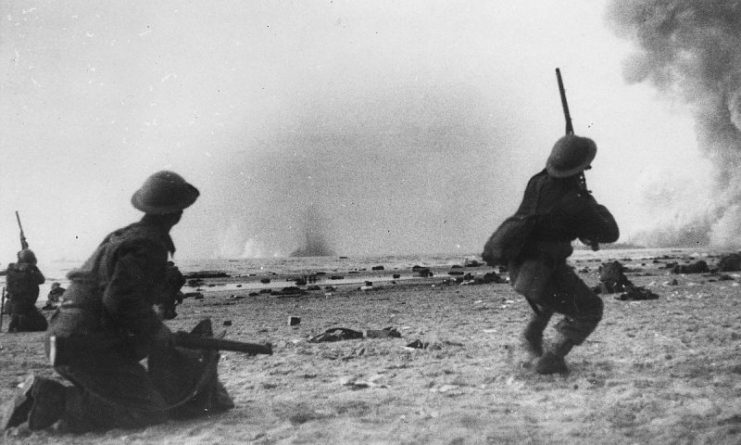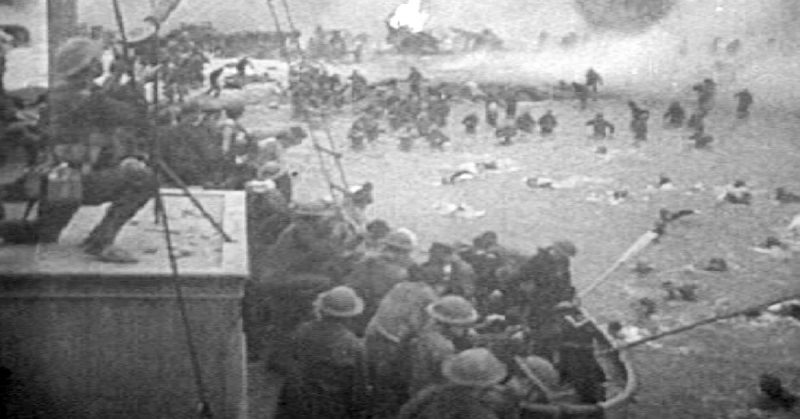Recently, the Vanguard, one of the many Little ships that aided in the evacuation at Dunkirk in 1940 has been located. Sitting on blocks and rotting away due to the weather, vandals and firewood seekers on Canvey Island, Essex, England it has now been returned home to Mangapps Railway Museum in the village of Burnham, England.
When Alan Bellchambers, a local teacher, discovered the boat, he and the owner of Smallgains Yard, Anton Weeks, offered it to Burnham Town Council at no cost provided the Council took responsibility for moving it. A team of volunteers transferred the boat forty miles south to the village where it had originally been built.
It is intended to restore the historical boat fully but according to Nick Skeens one of the volunteers who helped move it to Burnham:
“There’s a lot of interest here, and we are now trying to get the money together to restore her, it will be an enormous amount of course. The figure we have been given is between a quarter and half a million… It’s just a question of finding the money. She is such a beautiful boat; her lines are so gorgeous despite the damage.”

Skeens and the other volunteers have set up a charitable trust, and the owners of a brewery in the village plan to create a new ale called Vanguard and donate some of the profits for every glass they sell.
The Vanguard is an oyster and dredging boat built in 1937 by R&J Prior Company of Burnham. It is forty-five feet in length with a beam (the width of a vessel at its widest point) of fourteen feet six inches. It was made from pitch pine on oak with a Kelvin 44 engine designed for the English Channel rather than the open sea.
In the spring of 1940, early in the war, the French doubted the Germans would be able to conquer France. They had troops from Britain, France, Belgium, and Holland but not enough modern weapons to counter Nazi tanks and planes. The Germans had forced their way through Belgium, Holland, and Luxemburg and on into France by May 1940. Within just a few weeks the Allied forces had been pushed to the northern beaches of the English Channel as most of France was occupied by the Nazis.
Back in England, Prime Minister Winston Churchill made plans to rescue thousands of soldiers stranded on the beaches near Dunkirk, France. Operation Dynamo was launched on May 26, 1940, when the Royal Navy began to evacuate soldiers and return them across the Channel to England.

The Germans were bombing and strafing Dunkirk harbor which made the Allies realize they needed more boats. They began commandeering any seaworthy vessels to aid in the evacuation. When the word was put out, volunteer civilians joined the over 700 military ships sailing to the beaches of Dunkirk to help ferry soldiers to Allied territory. The Little Ships, including the Vanguard, were able to get close to shore and carried many soldiers to the naval vessels waiting farther out. Over 300,000 soldiers were taken to safety. Over 80,000 men who were unable to reach Dunkirk in time were either killed or taken prisoner by the Germans.
Many of the Little Ships were lost during the evacuation, but quite a few survived besides the Vanguard.
The Association of Dunkirk Little Ships lists six of the historical boats for sale, mostly fully restored including ONA II, Aberdonia, Seamew, Dowager, Dianthus and Ferry Nymph. The Association has asked that anyone who knows of any Little Ships, whether restored or in need of restoration, to notify them so they can research their background and prove their authenticity.
If authenticated, the Little Ships will have the honor of a plaque reading “Dunkirk” as well as permission to fly the flag of the Association.
